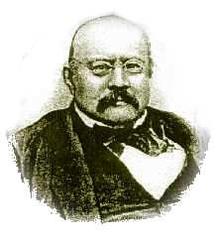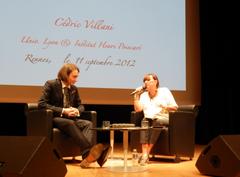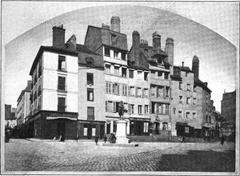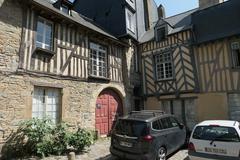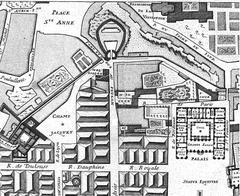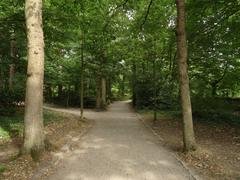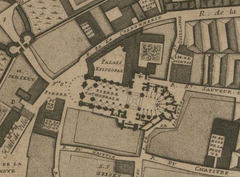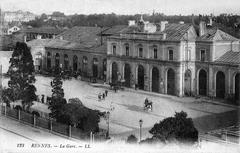
Isidore Odorico Mosaics in Rennes: Visiting Hours, Tickets, and Complete Guide
Date: 04/07/2025
Introduction: The Odorico Mosaic Legacy in Rennes
Rennes, the dynamic capital of Brittany, France, is celebrated for its rich Art Deco heritage, much of which is illuminated by the mosaic artistry of the Odorico family. Originating from the Friuli region in Italy, the Odoricos arrived in France in the late 19th century, eventually settling in Rennes and revolutionizing the city’s architectural landscape with their vibrant, innovative mosaics. Their distinctive style—characterized by bold geometric motifs, dazzling colors, and masterful technique—has become synonymous with Rennes itself. Today, exploring the Odorico mosaics is an immersive journey through the city’s creative renaissance, accessible via guided tours, self-guided walks, and digital experiences like the Audiala app (Port d’Attache, fykmag.com, Tourisme Rennes, 20minutes.fr).
Table of Contents
- Origins of the Odorico Family: From Friuli to Rennes
- The Second Generation: Isidore Odorico (1893–1945)
- Odorico Workshop: Techniques and Artistic Innovations
- Expansion and Recognition in Rennes
- Major Works: Key Sites to Visit
- Practical Visitor Information
- Cultural Integration and Influence
- Preservation and Contemporary Appreciation
- Frequently Asked Questions (FAQs)
- Summary and Recommendations
Origins of the Odorico Family: From Friuli to Rennes
The Odorico family’s journey began in Sequals, Friuli—a region famed for its mosaic artisanship. Facing a competitive industry in Italy, brothers Isidore and Vincent Odorico migrated to France, contributing their skills to major projects such as Paris’ Opéra Garnier by 1875 (Port d’Attache, Stade Rennais). Recognized for their expertise, they settled in Rennes in 1882, introducing mosaic art to a region with little previous tradition in the craft.
The Second Generation: Isidore Odorico (1893–1945)
Born in Rennes in 1893, Isidore Odorico II propelled the family business into new artistic territory. A graduate of the École des Beaux-Arts, he embraced the Art Deco movement, blending Italian tradition with modern French aesthetics (Port d’Attache). Under his leadership, the workshop expanded regionally, earning a reputation for innovative designs and technical mastery (Stade Rennais).
Odorico Workshop: Techniques and Artistic Innovations
The Odorico workshop gained renown for meticulous craftsmanship, creative flair, and a collaborative model—Isidore II designed, while Italian artisans executed the mosaics. Their signature techniques included embedding colored glass (smaltes) and pâte de verre into cement, creating luminous surfaces and subtle gradients (Mozaico). This approach enabled both decorative and functional applications across public and private spaces.
Expansion and Recognition in Rennes
By the early 20th century, the Odorico family had become central to Rennes’ decorative arts. Their mosaics adorned everything from public pools and markets to shop facades and residential entrances. Prestigious commissions, such as the Piscine Saint-Georges and Immeuble Poirier, solidified their legacy (Port d’Attache). The Odorico name became synonymous with elegance, durability, and the Art Deco spirit.
Major Works: Key Sites to Visit
Piscine Saint-Georges
- Location: 1 Rue Saint-Georges, Rennes
- Significance: Inaugurated in 1926, this Art Deco swimming pool is a masterpiece of Odorico design, featuring stylized wave motifs and vibrant mosaics in blue and green. Classified as a historic monument in 2016, it is undergoing a €28 million restoration (2028–2030) to preserve its original features (20minutes.fr).
Maison Odorico
- Location: 24 boulevard de la Liberté, Rennes (now a crêperie-salon de thé)
- Highlights: Built in 1940, the cubist-inspired facade and richly decorated interiors showcase Odorico’s artistic vision. The house is a pilgrimage site for mosaic enthusiasts and features in special guided tours (fykmag.com).
Immeuble Poirier and Other Notable Sites
- Immeuble Poirier: 1 rue de la Monnaie, with restored geometric Art Deco mosaics.
- Immeuble Valton: 34 rue Vasselot, admired for its striking blue, gold, and white motifs.
- Opéra de Rennes Arcades: Publicly accessible, showcasing stylized patterns.
- Halles Centrales, La Poste République, and Marché Central: Public buildings featuring Odorico mosaics as integral architectural elements.
- Numerous private residences and shopfronts: Especially in Thabor and République districts, with signature sunburst and peacock motifs (Tourisme Rennes, Stuc & Mosaic).
Practical Visitor Information
Visiting Hours and Tickets
- Piscine Saint-Georges: Open daily, typically 7:00 AM–9:00 PM, but subject to changes for restoration. Entry: ~€5 for adults, discounts for children/seniors. Guided tours available.
- Maison Odorico: Open for dining during crêperie hours and for guided tours (weekends by appointment; ~€10).
- Other Sites: Public exteriors viewable anytime; interiors may require tours or special events.
Accessibility and Travel Tips
- Most central sites are accessible by foot or public transport.
- Piscine Saint-Georges and Maison Odorico have facilities for visitors with reduced mobility.
- Photography is generally allowed in public areas; check restrictions at private or religious sites.
- Best visiting seasons: Spring and early autumn for mild weather and cultural events.
Guided Tours and Special Events
- The Rennes Tourist Office offers regular guided tours focused on the Odorico Mosaic Trail (from €6.50; 1.5–2 hours), including access to interiors otherwise closed to the public (Tourisme Rennes).
- Self-guided maps and the Audiala app provide interactive experiences with audio commentary and route suggestions.
- Special events, workshops, and exhibitions are held during annual heritage festivals and major anniversaries (Headtopics).
Cultural Integration and Influence
Isidore Odorico II was not just an artist but also a key figure in Rennes’ social and cultural life. His charismatic presence, involvement in local theater and sports (especially football with the Stade Rennais Université Club), and dedication to public service cemented the family’s integration into the city (Stade Rennais). The Odorico mosaics, once considered outdated, have undergone a renaissance since the 2000s, now celebrated as iconic elements of Rennes’ urban identity (France 3 Régions).
Preservation and Contemporary Appreciation
Municipal and private efforts have safeguarded Odorico mosaics through careful restorations and public engagement. The Piscine Saint-Georges project aims to enhance sustainability while preserving its Art Deco character (20minutes.fr). Cultural organizations, educational workshops, and community events ensure the mosaics’ continued relevance and appreciation (Rennes Infos Autrement, Les Carreaux de Caro).
Frequently Asked Questions (FAQs)
Q: Where can I see Odorico mosaics in Rennes?
A: Major sites include Piscine Saint-Georges, Maison Odorico, Immeuble Poirier, Immeuble Valton, Opéra arcades, Halles Centrales, and various shopfronts.
Q: Are guided tours available?
A: Yes. The Rennes Tourist Office offers guided mosaic tours from April to October. Self-guided trails are available year-round.
Q: What are the opening hours and ticket prices?
A: Piscine Saint-Georges is open daily (7:00 AM–9:00 PM, with seasonal variations). Entry is €5 for adults. Maison Odorico is open during crêperie hours and for pre-booked tours (€10). Most outdoor mosaics are free to view.
Q: Are the mosaic sites accessible for visitors with disabilities?
A: Yes, major public sites like Piscine Saint-Georges and Maison Odorico provide access for visitors with reduced mobility.
Q: Is photography allowed?
A: Photography is permitted in public spaces; check for restrictions in private or religious buildings.
Summary and Visitor Recommendations
The Odorico mosaics are a vibrant testament to Rennes’ architectural and artistic heritage, fusing Italian craftsmanship with French Art Deco modernity. Their presence—across public pools, markets, shopfronts, and residential buildings—transforms Rennes into an open-air museum. The city’s commitment to preserving and celebrating this legacy is evident in restoration projects, guided tours, and cultural events. Whether joining a guided tour, embarking on a self-guided exploration, or engaging with digital tools like the Audiala app, visitors can enjoy a deep, enriching experience of Rennes’ mosaic treasures. For up-to-date information on visiting hours, ticketing, and special events, consult the Rennes Tourist Office website or download the Audiala app (Port d’Attache, fykmag.com, Tourisme Rennes, 20minutes.fr).
Visual Elements (for enhancement)
- High-quality images of Piscine Saint-Georges mosaics, Maison Odorico interiors, and Immeuble Poirier façade
Alt tag example: “Odorico mosaic frieze at Piscine Saint-Georges in Rennes showcasing Art Deco design”
Internal Links
Key Dates and Figures
- 1875: Odorico brothers contribute to Opéra Garnier, Paris.
- 1882: Odorico family settles in Rennes.
- 1893: Birth of Isidore Odorico II.
- 1925–1926: Piscine Saint-Georges decorated and inaugurated.
- 1945: Death of Isidore Odorico II; legacy continues.
References and Further Information
- Port d’Attache – Odorico Mosaics in Rennes
- fykmag.com – The Art of Odorico Mosaics in Rennes
- Tourisme Rennes – Odorico Mosaic Trails
- 20minutes.fr – Restoration of Piscine Saint-Georges
- Mozaico – The Beautiful Mosaics of the Odorico Brothers
- Stade Rennais – Isidore Odorico Biography
- France 3 Régions – Odorico’s Art Deco Heritage
- Stuc & Mosaic – Art Deco Discovery
- Rennes Infos Autrement – Mosaic Art Weekend
- Les Carreaux de Caro – Odorico Event
- Balades Armoricaines – Odorico Destinations
For the latest updates, events, and interactive experiences, download the Audiala app or check the Rennes Tourist Office online. Share your Odorico mosaic discoveries with #OdoricoRennes and become part of Rennes’ living mosaic heritage.


